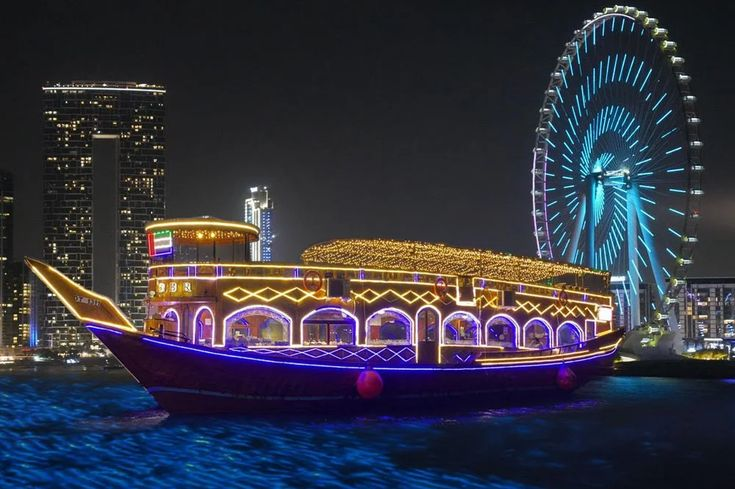Decoding the Myths and Legends Surrounding the Taj Mahal
The Taj Mahal, one of the Seven Wonders of the World, stands as a symbol of India’s rich history and architectural brilliance. Its beauty has fascinated historians, architects, and visitors for centuries, sparking numerous stories and theories over the years. While many of these tales have been debunked, they have given rise to myths that continue to surround the iconic monument, keeping it wrapped in mystery.
For travelers embarking on a Same Day Agra Tour from Delhi or booking comprehensive Delhi Agra Tour Packages, these myths often add an extra layer of intrigue to their visit. Though the Taj Mahal is widely recognized for its exquisite craftsmanship, there are several little-known facts about this marvel. Some are rooted in historical evidence, while others are nothing more than myths that have persisted over time. In this blog, we’ll explore these stories, separating fact from fiction, and uncover whether these legends have any truth or are simply part of the enduring myths surrounding the Taj Mahal.
Myths and Legends: Exploring Unknown Facts – Truth or Myth?
1. The Mysterious Hole in the Ceiling of the Taj Mahal’s Main Hall
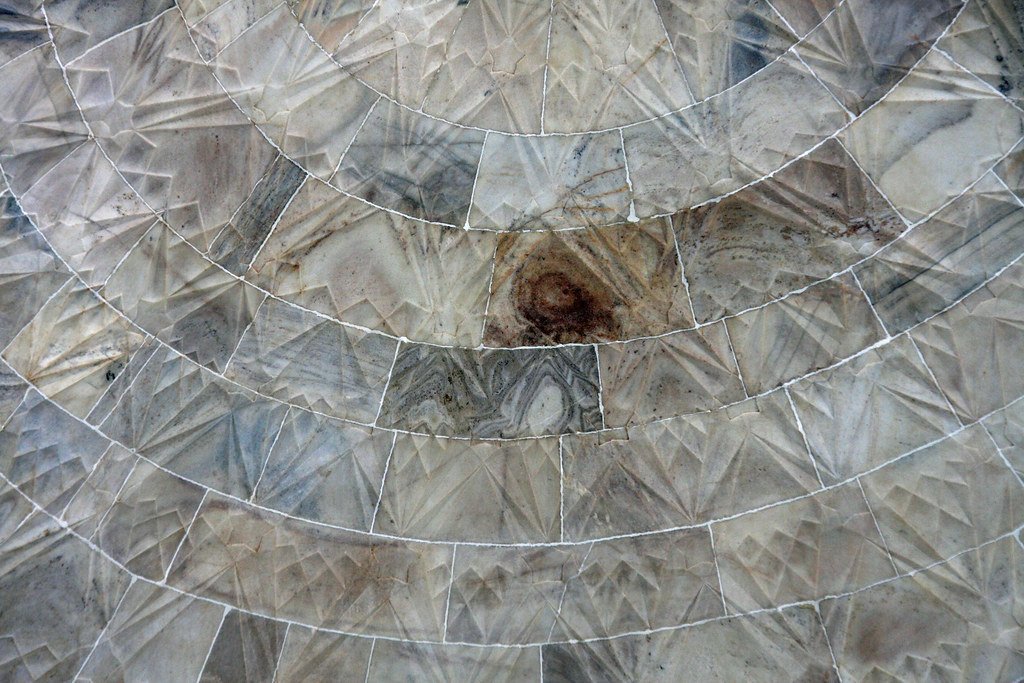
One of the lesser-known architectural oddities of the Taj Mahal is the small hole in the ceiling of the main hall, directly above Mumtaz Mahal’s tomb. This anomaly has fueled several myths, including the idea that an artisan deliberately introduced the flaw to sabotage the structure after learning of Shah Jahan’s supposed plan to mutilate the workers who built the Taj Mahal.
Fact or Fiction?
While the myth is intriguing, there is no historical evidence to support it. The hole is more likely the result of structural challenges or natural factors. Some experts suggest it may be linked to condensation caused by fluctuating humidity levels inside the building, leading to water droplets forming on the ceiling during the rainy season. This scientific explanation is more plausible than the tale of sabotage. Thus, the myth surrounding the hole remains unsubstantiated.
2. The Myth of Shah Jahan’s Plan for a Black Taj Mahal
One of the most famous legends surrounding the Taj Mahal is the story of Shah Jahan’s plan to build a second mausoleum made entirely of black marble. This supposed “Black Taj Mahal” was believed to be located across the Yamuna River, opposite the original white Taj Mahal.
According to this myth, the emperor intended for the black mausoleum to serve as his tomb, creating a mirror image of the Taj Mahal in eternal contrast — a vision of white and black perfection.
Fact or Fiction?
The origin of this myth can be traced back to the writings of the French traveler Jean-Baptiste Tavernier, who visited India during the 17th century. His account spread the idea that Shah Jahan had grand plans for a second, darker monument. However, excavations conducted in the 1990s debunked this claim. Archaeologists discovered that the supposed black marble ruins on the opposite bank were, in fact, discolored white stones.
A more plausible explanation for this myth is the optical illusion created by the reflection of the white Taj Mahal in the pool of the Mehtab Bagh garden, which could appear as a dark, mirror image of the monument, giving rise to the story of a “Black Taj Mahal.”
While the tale of the black mausoleum is captivating, it remains just that—a legend, with no historical or archaeological evidence to support it.
3. The Taj Mahal’s Minarets Are Not Perpendicular
Visitors who closely observe the Taj Mahal may notice that its four minarets, located at each corner of the structure, are not perfectly perpendicular. Unlike typical minarets that stand straight, these were intentionally designed to tilt slightly outwards.
The purpose behind this architectural choice was to protect the main mausoleum in the event of a natural disaster such as an earthquake. The outward tilt would ensure that if the minarets ever collapsed, they would fall away from the central structure, thereby preserving the integrity of the Taj Mahal itself.
Fact or Fiction?
This claim is indeed a verifiable fact. The outward-leaning minarets are part of the intentional design of the Taj Mahal, and anyone who visits can observe this for themselves. It’s a testament to the remarkable foresight of the architects who constructed this iconic monument, adding another layer to its genius. This myth, unlike many others, holds true.
4. The Majestic Inlay Work Inside the Taj Mahal
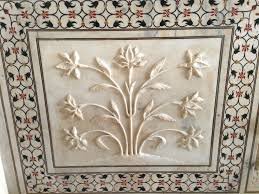
The interior of the Taj Mahal is adorned with intricate inlay work, featuring rare, precious, and semi-precious stones sourced from India and abroad, including Sri Lanka and China. These inlays, known as pietra dura, were crafted to create breathtaking designs that decorate the walls of the monument.
While the Taj Mahal suffered from plundering during British colonial rule, efforts to restore the monument began in the late 19th century. The restoration preserved much of its grandeur, allowing visitors to marvel at the craftsmanship to this day.
Fact or Fiction?
This is a well-documented fact. The intricate inlay work remains one of the most stunning features of the Taj Mahal, adding to its reputation as one of the world’s greatest architectural achievements.
5. The Myth of Shah Jahan Maiming the Architects
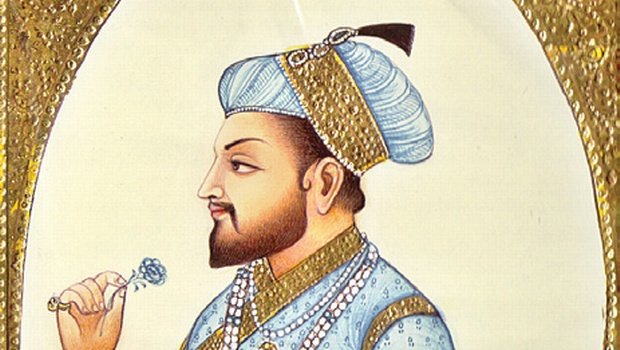
One of the darker and more gruesome legends surrounding the Taj Mahal is the story that Shah Jahan maimed or even killed the architects and craftsmen who worked on the monument. According to this myth, the emperor wanted to ensure that no other structure could ever rival the beauty of the Taj Mahal by preventing the artisans from replicating its design elsewhere.
Fact or Fiction?
Despite the popularity of this story, there is no historical or archaeological evidence to support the idea that Shah Jahan inflicted such brutal punishments on those who created his masterpiece. The myth likely originated from the fascination with the monument’s unparalleled beauty and the assumption that its creator would go to extreme lengths to protect its uniqueness.
Historians agree that there is no credible documentation from the period that suggests such a horrific act occurred. The artisans and architects who worked on the Taj Mahal were highly respected for their skill and would have continued their work on other Mughal projects. Thus, this story remains a myth, without any factual basis to support it.
6. The Journey of Mumtaz Mahal’s Burial: A Tale of Multiple Resting Places
While the Taj Mahal is renowned as the final resting place of Mumtaz Mahal, the beloved wife of Shah Jahan, her body did not find its permanent home in Agra immediately after her death. Mumtaz Mahal was initially buried in Burhanpur, where she died in 1631 during childbirth.
After some time, her remains were transferred to Agra, where they were temporarily interred in the complex of the Taj Mahal, while construction was still ongoing. It wasn’t until 12 years later that her body was moved to the Taj Mahal’s basement, where it now lies in its final resting place beneath the iconic structure.
Fact or Fiction?
This is indeed a true historical fact, although the exact timing of when her body was moved from Burhanpur to Agra remains somewhat uncertain.
Another intriguing, yet unfounded story also circulates about Mumtaz Mahal’s burial. Some claim that her body was mummified and preserved in its original state. However, since the inside of the coffin has never been officially documented or examined, this claim remains a myth, and will likely stay so unless her grave is ever opened again for further investigation.
7. The Taj Mahal Changes Colors
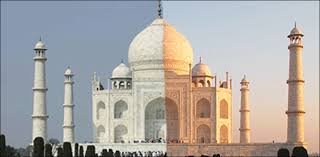
The Taj Mahal is not just renowned for its architectural beauty but also for its mesmerizing ability to change colors throughout the day. Depending on the time of day and the conditions of the sky, the Taj takes on a spectrum of hues. In the early morning, it reflects a soft pinkish tone, while during the evening, the monument appears in a milky white shade. Under the moonlight, the Taj Mahal exudes a serene light blue hue, creating an almost magical atmosphere that enchants visitors.
Fact or Fiction?
This fascinating phenomenon is indeed true. The changing colors of the Taj Mahal result from the reflection of light on its exquisite white marble surface, which interacts with the natural light at different times of the day. For those on a Same-day Agra Tour by Car or exploring with a Delhi Agra Tour Package, witnessing this enchanting transformation firsthand makes each visit to the Taj Mahal a unique visual experience that lingers in the memory long after the journey ends.
8. Surprising Fact: The Taj Mahal is Taller Than the Qutub Minar
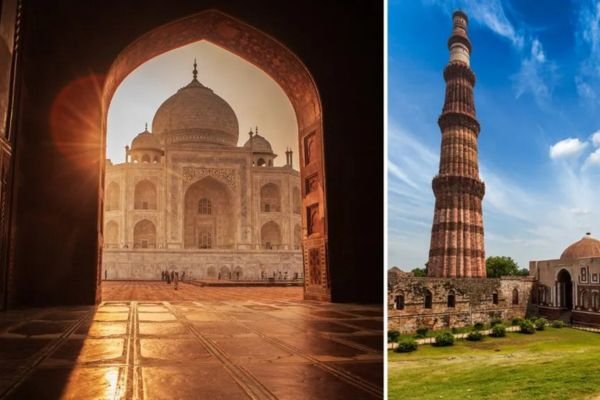
It may come as a surprise, but the Taj Mahal stands taller than the Qutub Minar, one of Delhi’s most famous monuments. Although both are often recorded as being 73 meters (240 feet) tall, the Taj Mahal surpasses the Qutub Minar by about 5 feet.
Fact or Fiction?
This is a factual observation. Despite their similar official measurements, the Taj Mahal’s iconic dome and towering minarets place it slightly above the Qutub Minar in height, solidifying its grand stature.
9. The Controversial Myth: The Taj Mahal Was Originally a Hindu Temple
One of the most controversial and persistent myths surrounding the Taj Mahal is the claim that it was originally a Hindu temple, specifically a Shiva temple called Tejo Mahalaya. This theory was popularized by P.N. Oak in his publication, where he argued that the Taj Mahal was built over a pre-existing Hindu structure. Oak presented what he considered to be evidence, pointing to architectural inconsistencies and engravings that he believed were not of Islamic origin.
This theory has gained traction among some groups in India, and over the years, it has fueled demands to restore the Taj Mahal to its supposed Hindu roots, creating significant controversy.
Fact or Fiction?
Despite the controversy, this claim has been thoroughly debunked by both the Indian government and reputable historians. India’s Supreme Court and the Archaeological Survey of India have repeatedly rejected the notion that the Taj Mahal was ever a Hindu temple. There is no historical or archaeological evidence supporting P.N. Oak’s theory, and his arguments have been widely criticized as speculative and lacking credibility.
The Taj Mahal, commissioned by the Mughal Emperor Shah Jahan in the 17th century, remains an enduring symbol of Islamic architecture and a monument to his wife Mumtaz Mahal. Although the myth continues to resonate with certain groups, it has no factual basis, and experts agree that the Taj Mahal was never anything other than Shah Jahan’s masterpiece.
10. The Myth of European Architects Designing the Taj Mahal
A popular myth suggests that the Taj Mahal was not solely the work of Indian architects but was designed by European architects, particularly an Italian named Geronimo Vereneo or a Frenchman named Austin of Bordeaux. Some have even claimed that these foreign architects were the masterminds behind the iconic design.
Fact or Fiction?
This claim has been thoroughly debunked by historians. The design and construction of the Taj Mahal were directed by Shah Jahan and carried out by a team of skilled Mughal architects and artisans. There is no credible evidence to support the involvement of any European architect in the creation of the Taj Mahal. Instead, historical documents and accounts point to Ustad Ahmad Lahauri, a renowned Mughal architect, as the chief designer of the monument.
While European influence in Mughal art and architecture is well-documented, the Taj Mahal remains an authentic product of Mughal vision and Indian craftsmanship. This myth of European involvement is, therefore, a fabrication with no historical backing.
Conclusion
The myths and legends surrounding the Taj Mahal add an extra layer of intrigue to this already mesmerizing monument. While some of these stories may remain in the realm of mystery, they continue to captivate visitors from around the world. If you’re looking to explore the Taj Mahal and uncover its secrets firsthand, booking a Same Day Agra Tour from Delhi is the perfect way to experience this wonder up close.
At SRM Holidays, Delhi Agra Tour Packages allow you to discover the rich cultural heritage of this iconic site and many more. As a highly-rated travel agency in Delhi, we pride ourselves on delivering a hassle-free, memorable travel experience. Whether you’re visiting the Taj Mahal for the first time or the tenth, our expertly curated tours ensure that each visit feels special.
Plan your next adventure with SRM Holidays and let us take you on a journey through the Golden Triangle that you will cherish forever!
FAQ’s
What is the deeper mystery behind the Taj Mahal?
The Taj Mahal is more than just an architectural masterpiece commissioned by Emperor Shah Jahan; it is a symbol of eternal love, harmony, and spirituality. Shah Jahan envisioned the Taj not only as a tribute to his beloved Mumtaz Mahal but as a universal message to humanity: “Pure love is the soul of life.” Its beauty transcends the physical realm, touching the heart and spirit of all who visit, making it a must-see destination on any Delhi Agra tour package.
What does legend say about Shah Jahan’s plan for another Taj Mahal?
According to legend, Shah Jahan dreamed of building a second mausoleum—a “Black Taj Mahal”—crafted entirely from black marble. This majestic structure was rumored to be planned across the Yamuna River, creating a striking contrast to the white Taj Mahal. Though no such monument was ever built, the story of the Black Taj adds a layer of mystery to Shah Jahan’s legacy and his profound dedication to love and beauty.
Is there a Hindu symbol hidden in the Taj Mahal?
Yes, the lotus, a sacred symbol in Hinduism, can be seen throughout the Taj Mahal’s design. Although it is not a part of Islamic tradition, the influence of Hindu culture is evident in the intricate lotus motifs that grace the monument. The fusion of Hindu and Islamic artistry reflects the cultural blending that defines the Mughal era and adds to the Taj’s unique charm.
Why are some rooms in the Taj Mahal locked?
The locked rooms of the Taj Mahal have sparked curiosity and intrigue, but there are no hidden secrets behind them. These rooms were once open to the public, but in 1978, flooding caused damage and cracks in the structure. To preserve the integrity of the monument, authorities sealed the rooms to protect them from further harm. The locked doors, rather than holding secrets, serve as guardians of the Taj’s enduring beauty.
What is the real name of the Taj Mahal?
Historically, the Taj Mahal was referred to as rauza-i munavvara, meaning “the illumined tomb” in Persian. This name, found in the 1636 text Padshahnama by Abdul Hamid Lahori, reflects the radiance and splendour of the monument. The name “Taj” may have evolved from Mumtaz’s own name, symbolizing the deep connection between the emperor and his beloved queen.

